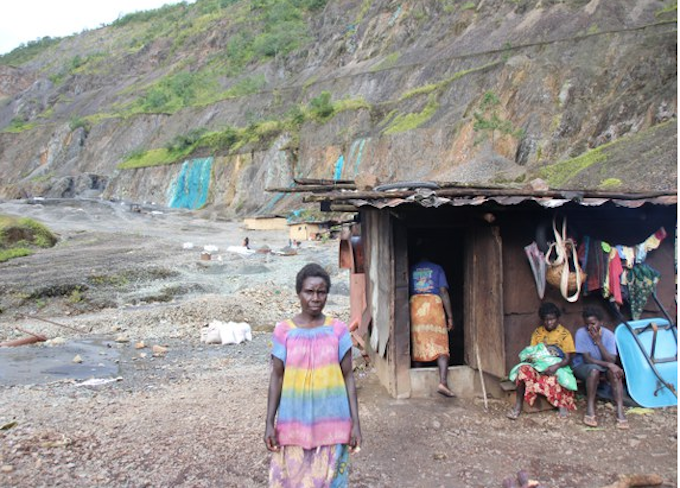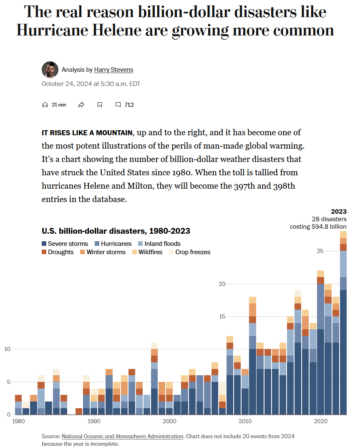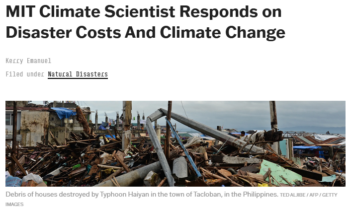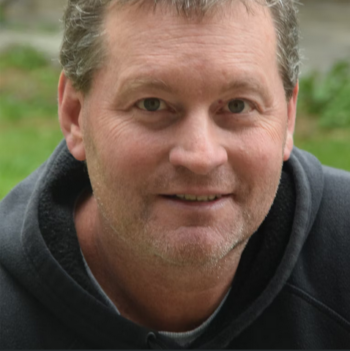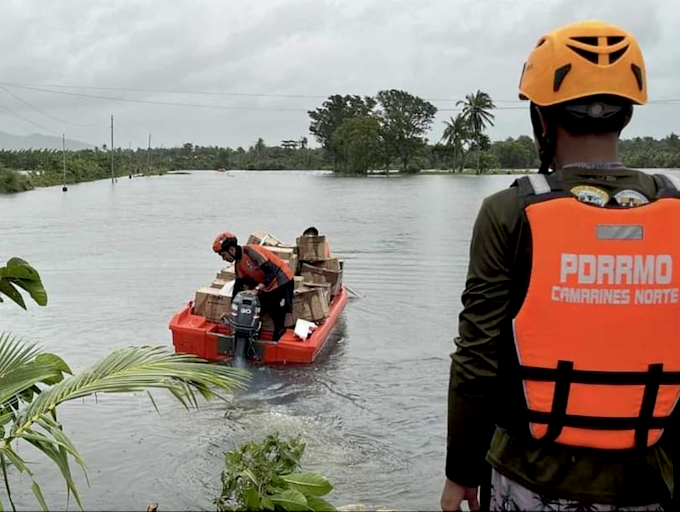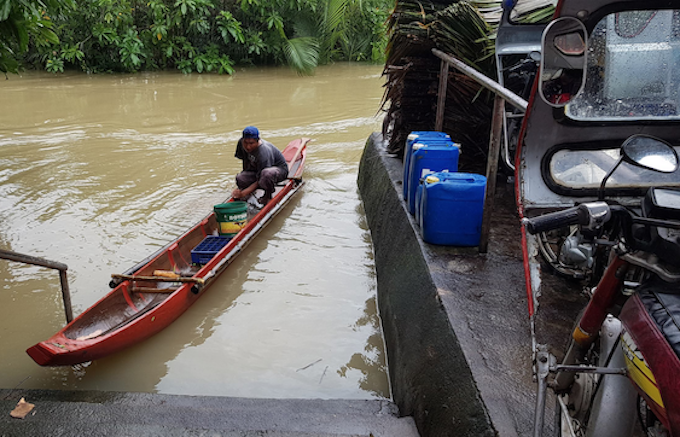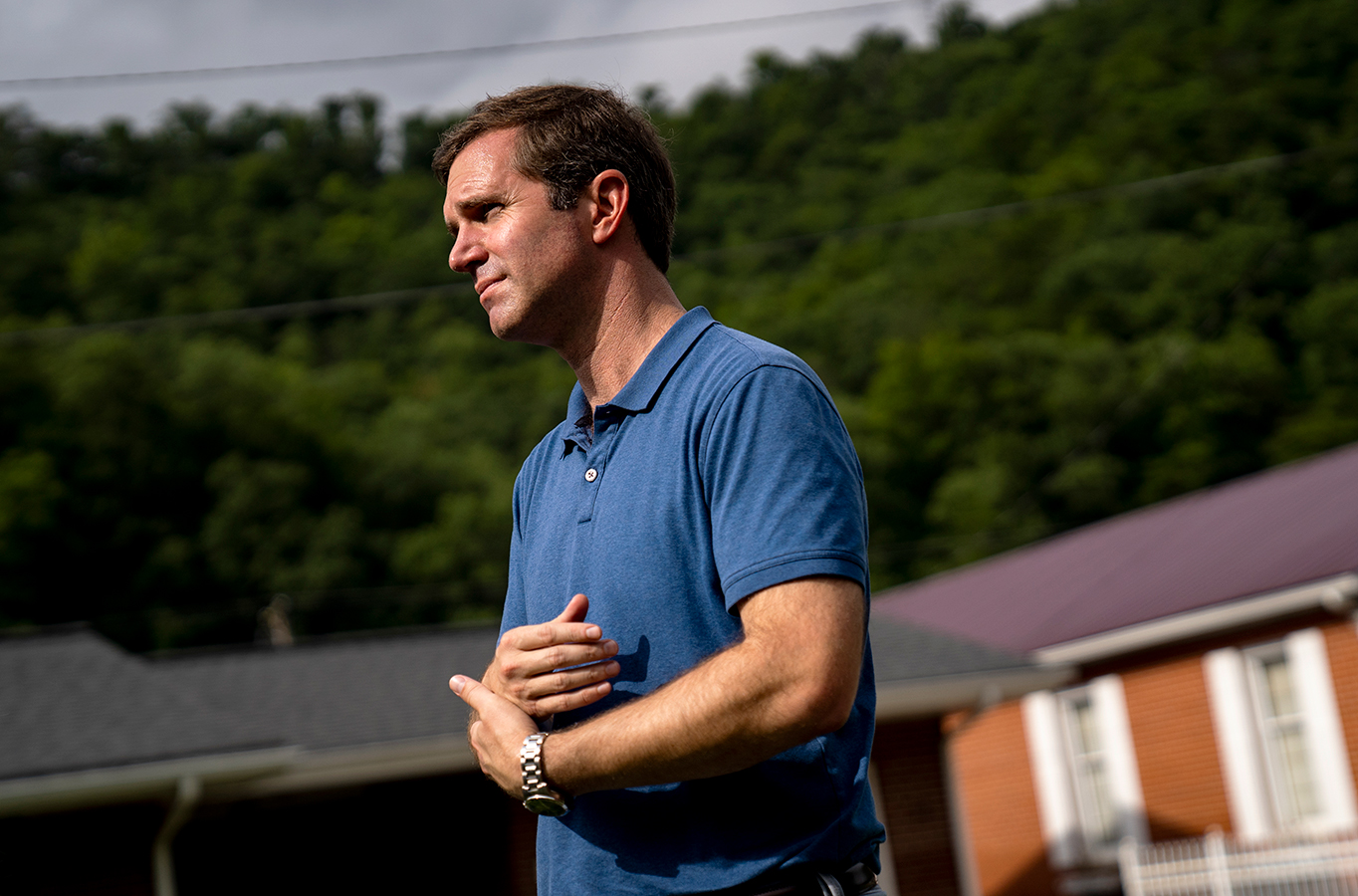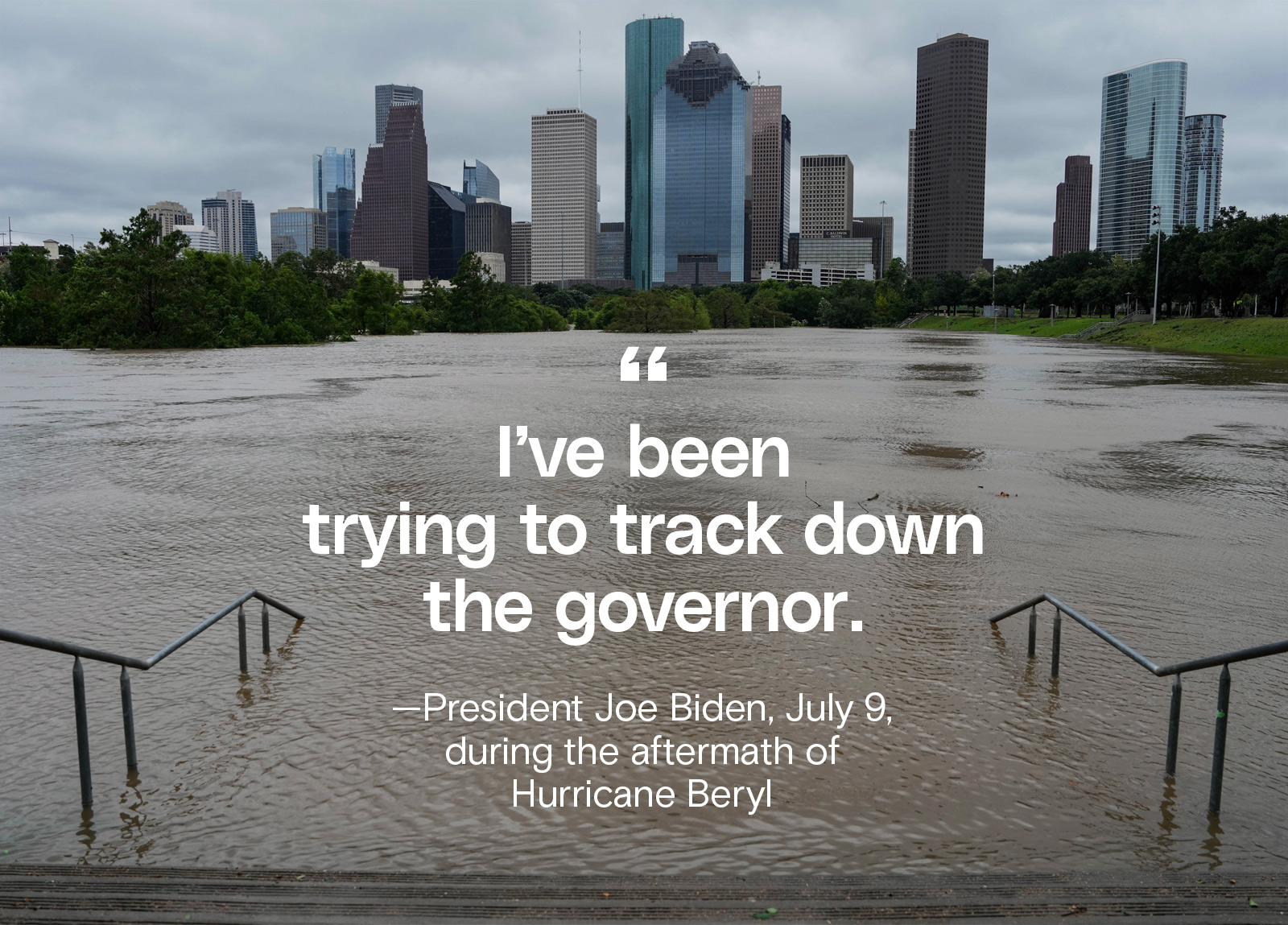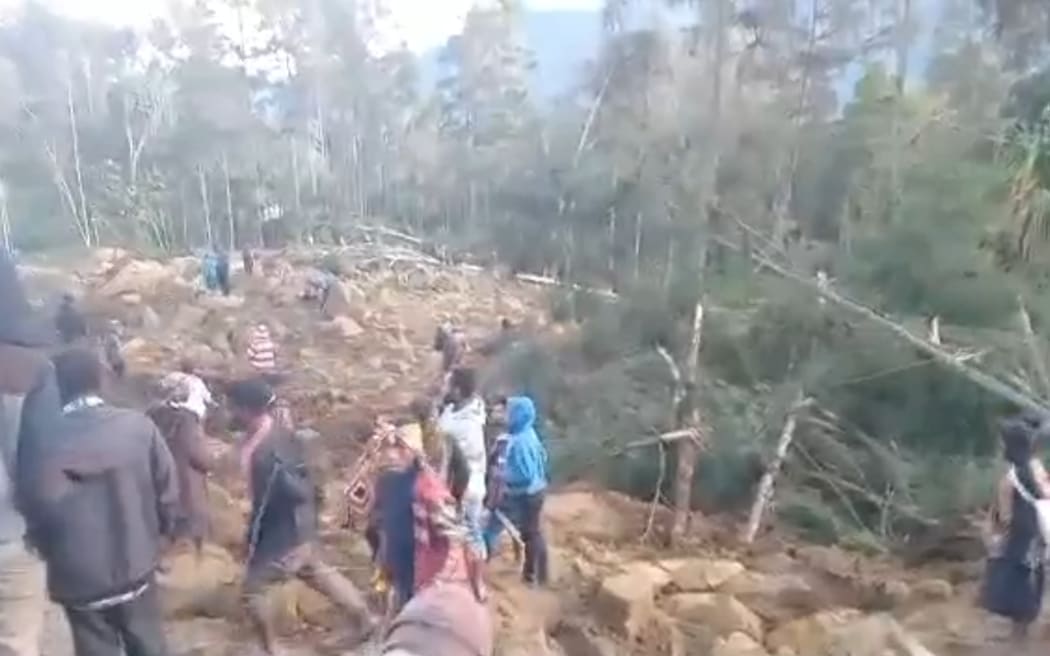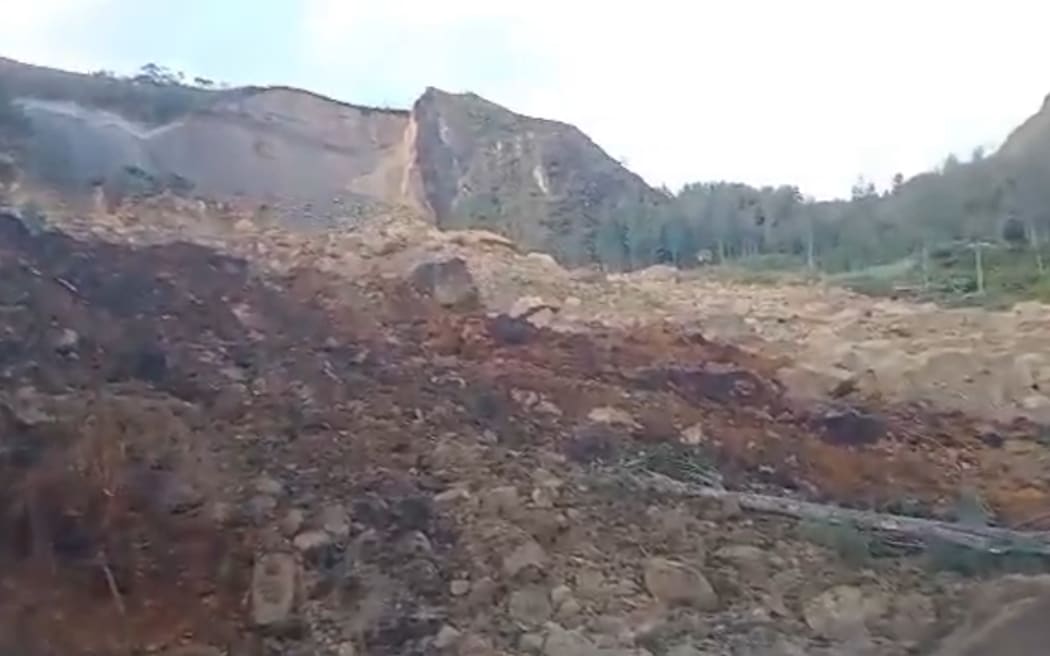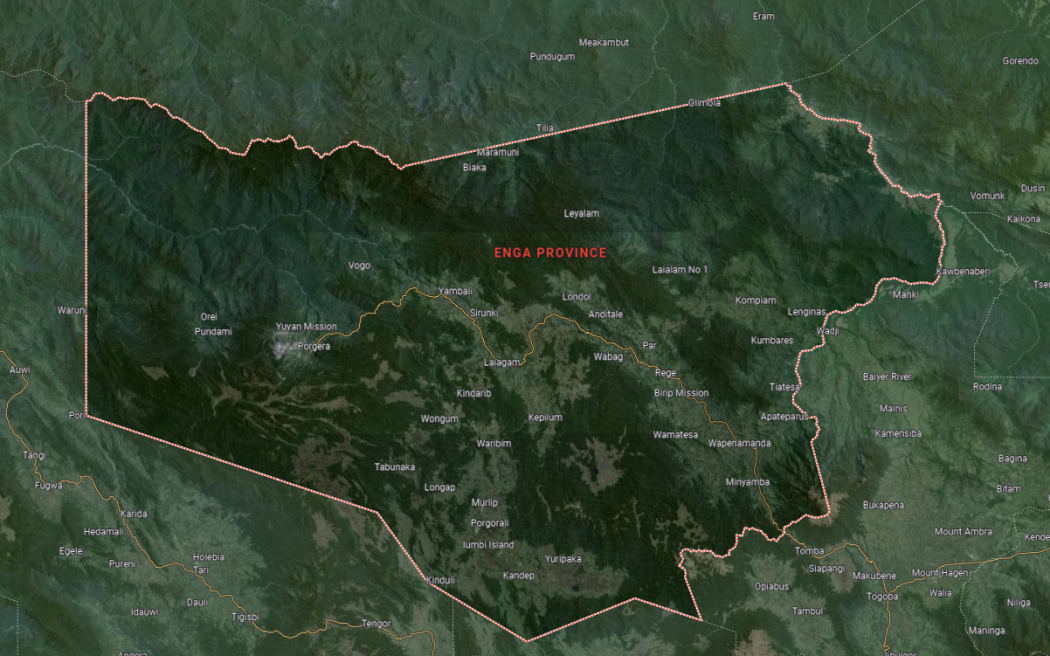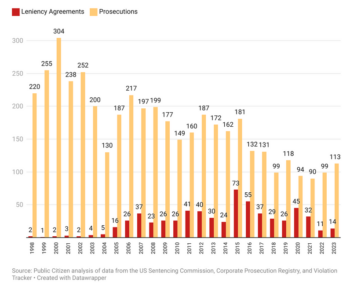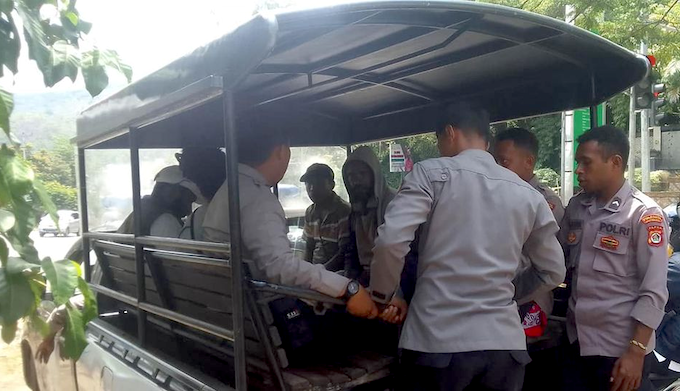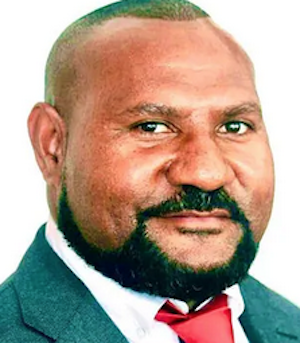Having no Native American ancestry, I nevertheless want to express a deep admiration for the intense beauty of the spiritual foundations of what Steve Newcomb (Shawnee-Lenape) suggests we refer to as “the view from the shore”—the perspectives of peoples enjoying a genuinely free and independent existence before what Tink Tinker (wazhazhe/Osage) has called “the eurochristians” invaded bringing with them a foreign system of domination that has since been maintained by their heirs and successors.
If we take this “view from the shore” seriously, it calls into question all of the crumbling dominant narratives of our world today—especially narratives based in “nationalism” or in “democracy and human rights” as paths to a more just and peaceful world—and offers a possible way out of what Iain McGilchrist has called “The Unmaking of the World.” We may, perhaps, reimagine global history to see the world as voluntarily entering or reentering into millennia of Indigenous history and culture rather than continually absorbing the peoples of the Native Nations with horrific force and violence into a “Western,” or a “modern,” or even a “democratic” culture that is steadily attacking the spiritual foundations for a shared life on this planet.
The steady attack that is conveyed in these still widely cherished narratives—the steady attack on Indigenous wisdom and spiritual truth that the false universalism of these narratives entails—draws its strength from a covert religious bigotry and a doubling down on moral depravity that has become traditional over the past six centuries; an ongoing whirlpool of lowering moral standards.
Originating in fifteenth century papal bulls attempting to justify what would become chattel slavery, the trans-Atlantic slave trade, and the invasion and conquest of the “New World,” the first doubling down came—as we will see—in response to the criticisms of grotesque Spanish misconduct articulated by Bartolomé de Las Casas and his allies beginning early in the sixteenth century. In this dynamic, first Spain, and then the other eurochristian powers (including, as of the 1830s, the United States), ultimately embraced the arguments—not of Las Casas—but of Juan Ginés Sepúlveda and his allies and their successors as to the alleged virtue of their “Christian” nations and the alleged inferiority of the peoples of the Native Nations—the “heathens.” This contrast between “Christians” and “heathens” is at the origins of both eurochristian nationalism and modern racism and has been ever since 1452 when Pope Nicholas V authorized Portugal’s Alfonso V to enslave in perpetuity “Saracens,” “Pagans,” and “other enemies of Christ wheresoever placed.”
The difference between “Christian” dominators and the “heathen” dominated remains the foundation of what the American Bar Association calls “federal Indian law” to this day. This is a body of “law” that is not made by the Native Nations but rather imposed upon them. As a unanimous Supreme Court put it, in 1823, in Johnson v. McIntosh, the mere presence of representatives of a “Christian people” on this side of the Atlantic “necessarily diminished” the sovereignty of the “heathens”—the Native peoples—and gave an “ultimate dominion” to the discoverers whereby they claimed a “title” to the land and a “right” to dominate the Native inhabitants—a “degree of sovereignty” over them—to be in their government.
This pernicious doctrine of Christian discovery has been inscribed in more secular language into what now passes for international law where “Indigenous peoples” (read: “heathens”) are defined as peoples under the domination of nation-states (read: “eurochristian dominators”). The covert religious bigotry this involves—and the ongoing and deliberate doubling down on immorality—is part of what Denise Ferreira da Silva has called our “global political architecture.”
The secular religion of nationalism—in many ways the infrastructure of this global architecture—has greatly reinforced the claims made by those who exercise, or seek to exercise, domination in our world. Having experienced domination at the hands of eurochristian nationalists, much of the world has adopted and adapted a version of nationalism in an attempt at self-defense. Nationalist doctrine holds (mistakenly), as Elie Kedourie argued more than sixty years ago, that humanity is divided by nature into nations, that nations are known by certain characteristics that can be ascertained, and that the only legitimate form of government is national self-determination (in the sense of a nation having a state of its “own”). In short, this doctrine holds that “nations” are “rightful sovereigns” under no superior moral or legal authority whose states can pretty much dominate “things” at will (such as—according to the United States Supreme Court to this day—“Indigenous peoples”). This assertion that the Supreme Court claims that the United States has a “right” to treat the Native Nations as things—as subjects completely under its “plenary power”—is evident in such horrific American misconduct as that involved in forcing the Native Nations onto the Trail of Tears and is powerfully demonstrated in my most recent book, Arguments Over Genocide, in Peter d’Errico’s Federal Anti Indian Law, in Steve Newcomb’s classic, Pagans in the Promised Land, and in the more philosophical exploration of the historical record, Political Principles and Indian Sovereignty, by Lee Hester (Choctaw).
All nations, from a perspective informed by Indigenous ideas, are constituted by the collective self-consciousness of peoples with a capacity to recognize all living beings as our kith and kin; peoples who are obliged to act in accordance with that recognition in trustworthy, reciprocal, and consensual ways towards all life. All peoples sense the presencing of the whole and the relationships it contains in contrast with the re-presentations of reality that are perceived and generated by states—the maps rather than the terrain—that are part of the efforts of all systems of domination to control and manipulate.
As George Manuel (Secwepemc), chief of the National Indian Brotherhood (known today as the Assembly of First Nations), has written:
Perhaps when men no longer try to have ‘dominion over the fish of the sea, and over the fowl of the air, and over every living thing that liveth upon the earth,’ they will no longer try to have dominion over us. It will be much easier to be our brother’s keeper then.” As the Basic Call to Consciousness—emerging from the Haudenosaunee in 1977—puts it: “The way of life known as ‘Western Civilization’ is on a death path…. The air is foul, the waters poisoned, the trees dying, the animals are disappearing. We think even the systems of weather are changing…. The people who are living on this planet need to break with the narrow concept of human liberation and begin to see liberation as something that needs to be extended to the whole of the Natural World. What is needed is the liberation of all the things that support life—the air, the waters, the trees—all the things that support the sacred Web of Life.
The greatest political divide in our world today is the divide between those who believe that benevolent authority (however variously defined) is necessary to the establishment, maintenance, and improvement of any worthwhile community, and its conduct of relations with any and all other communities, and those who think that at the most inclusive level the beloved community already exists (that it is constituted by the spiritual fact that all living beings are our kith and kin) and that our responsibility is to maintain balance and harmony with and within this beloved community without domination. Those on the pro-“benevolent authority” side of this divide tend to seek security through control and manipulation. Those on the other side understand that the whole cannot be dominated and that harmony and balance with and within it must be sought instead. Such balance and harmony is not a human creation, still less an expression of some “political will.” On the contrary, it is a gift of creation, and especially of our grandmother Earth, and we are all obliged to respect this gift.
There is a grain of truth in the narrative that presents “democracy and human rights” as emerging in the United States and then spreading—as the “best” form of government—towards global hegemony in subsequent centuries against the resistance of monarchical and dictatorial powers including, in the twentieth century, both Nazi Germany and Soviet Russia. That grain of truth is rooted in the soil of the “New World” and the cultures and polities that this land has sustained for millennia. Embracing the original free and independent existence of the peoples of the Native Nations, these cultures and polities do in fact include forms of government from which the “modern” world has learned much of what little it knows of genuine democracy. It is as an attempt at genuine democracy—a failed attempt at voluntarily entering Indigenous culture and history—that the narrative of “democracy and human rights” should be seen and understood.
Brother Gabriel Sagard’s early seventeenth century account of the Wendat, a work that became a bestseller in Europe cited by both Locke and Voltaire, is one of many that David Graeber and David Wengrow review in The Dawn of Everything. According to Sagard: “They reciprocate hospitality and give such assistance to one another that the necessities of all are provided for without there being any indigent beggar in their towns and villages; and they considered it a very bad thing when they heard it said that there were in France a great many of these needy beggars, and thought this was for lack of charity in us, and blamed us for it severely.” The Jesuit missionary Le Jeune wrote of the Montagnais-Naskapi in 1642: “They imagine that they ought by right of birth, to enjoy the liberty of wild ass colts, rendering no homage to anyone whomsoever, except when they like. They have reproached me a hundred times because we fear our Captains, while they laugh at and make sport of theirs. All the authority of their chief is in his tongue’s end; for he is powerful so far as he is eloquent; and, even if he kills himself talking and haranguing, he will not be obeyed unless he pleases the Savages.” Writing of the Wendat in 1648, Father Lallemant noted that “They are free people, each of whom considers himself of as much consequence as the others; and they submit to their chiefs only in so far as it pleases them.”
As Graeber and Wengrow note, when it comes “to questions of personal freedom, the equality of men and women, sexual mores or popular sovereignty—or even, for that matter, theories of depth psychology—indigenous American attitudes are likely to be far closer to the reader’s own than seventeenth-century European ones.” Sixteenth and seventeenth century glimpses of this more genuine democracy became a major tributary flowing into the Enlightenment. Their significance is only beginning to be recovered by contemporary scholarship. And the depth of the failure of the Enlightenment and its successors to become rooted in Indigenous spiritual truth rather than in intellectual abstractions is still to be fully recognized.
It is only as Native scholars have addressed the spiritual foundations of their own societies—as, for example, in God is Red by Vine Deloria, Jr. (Standing Rock Sioux) and Aazheyaadizi: Worldview, Language, and the Logics of Decolonization by Mark Freeland (Sault Ste. Marie Tribe Chippewa)—that they have begun to become more accessible to academic audiences. The works of some rare outsiders, such as Marshall Sahlin’s recent The New Science of the Enchanted Universe, are also helpful. In Radical Wholeness, Philip Shepherd shows something of how “modern” culture enforces divisions within each of us, and among all of us, depriving our world of the qualities we most want to experience—connection, peace, grace, simplicity, clarity, and the like—all of which arise from a sense of wholeness.
It is past time to put an end to the false universalism, perhaps most persuasively expressed by G. K. Chesterton, that links democracy to Christian thought and that claims that “There is no basis for democracy except in a dogma about the divine origin of man.” While that claim is obviously mistaken as it completely ignores the Indigenous foundations of a deeper and more genuine democracy and its influence, Chesterton was correct to warn that without an adequate spiritual foundation there was a great danger to democracy—including to the American democratic experiment—that it would “become wildly and wickedly undemocratic.” Chesterton was not looking back—as he easily could have been—to slavery, the Trail of Tears, and the invasion of the West, but rather looking ahead toward the future and, in particular, the danger to American society that “Its rich will riot with a brutal indifference far beyond the feeble feudalism which retains some shadow of responsibility or at least of patronage.”
The sharp and difficult point that must be grasped here—wounding to the egos of prideful people and prideful nations as it will be—is that, under adherence to even a tacit and allegedly democratic system of domination, the terms “human” and “Christian”—and even “democratic”—can acquire horrific meanings and their advocates become filled with enslaving and even genocidal intent toward those deemed “outside” these categories and seen as “justly” subordinated to those within them. The truth is that the Native peoples have proved better able to realize a human flourishing—in terms of the moral standards that are allegedly held by the societies of Christendom and its secular successors—than have these same societies. The Native peoples have proven that they are capable of being more virtuous—more charitable, more equalitarian, more free, and more attuned to the needs of the land and of all living beings. Much as some contemporary eurochristian attitudes may be closer to those of the Indigenous world than to those of Christendom, the spiritual foundations of our societies seem as far away as ever.
There was, to be sure, a spiritual foundation to the work of the philosophers of the American Revolution and the framers of the Constitution. Perhaps the single most important architect of this work was the Pennsylvanian jurist James Wilson. In a famous political pamphlet in 1774, Wilson declared that “All men are, by nature, equal and free” that “no one has a right to any authority over another without his consent” and that “all lawful government is founded upon the consent of those who are subject to it.” Wilson recognized that the Native Nations had never consented to be governed by the United States and that the United States therefore had, as he put it in 1776, “no right over the Indians, whether within or without the real or pretended limits of any Colony.”
Wilson’s respect and love was not confined to white male property owners. His hope was for an American society in which: “All will receive from each, and each will receive from all, mutual support and assistance: mutually supported and assisted, all may be carried to a degree of perfection hitherto unknown; perhaps, hitherto not believed.” And he carried this hope into the international sphere:
It may, perhaps, be uncommon, but it is certainly just, to say that nations ought to love one another. The offices of humanity ought to flow from this pure source. When this happily is the case, then the principles of affection and friendship prevail among states as among individuals: then nations will mutually support and assist each other with zeal and ardour; lasting peace will be the result of unshaken confidence; and kind and generous principles, of a nature far opposite to mean jealousy, crooked policy, or cold prudence, will govern and prosper the affairs of men.
Wilson believed that the American people had claimed such powers as they asserted a right to exercise under the law of nations—an expression of natural law—while recognizing the equal right of all other nations, including the Native Nations, to do likewise. This is what the sovereignty of “we the people” meant to Wilson: that we were answerable to the international moral and legal order under which we claimed our rights—and ultimately answerable to God—for our conduct. He made this perfectly clear in his law lectures in 1790-1791 at the College of Philadelphia. The first of these lectures was attended by the entire House of Representatives and the entire Senate of the United States—and by the entire Pennsylvania House of Representatives and Senate—as well as by the President and Martha Washington, and by the Vice President and Abigail Adams, and they are a marvel to read. These lectures provide an authoritative context in which to understand the intentions of the framers of the Constitution in terms of the revolutionary American jurisprudence that helps inform it and which has in the past enabled reform movements to appeal to the Constitution as if it were a “promissory note.”
[When] I say that, in free states, the law of nations is the law of the people; I mean that, as the law of nature, in other words, as the will of nature’s God, it is indispensably binding upon the people, in whom the sovereign power resides; and who are, consequently, under the most sacred obligations to exercise that power, or to delegate it to such as will exercise it, in a manner agreeable to those rules and maxims, which the law of nature prescribes to every state, for the happiness of each, and for the happiness of all. How vast—how important—how interesting are these truths! They announce to a free people how exalted their rights; but at the same time, they announce to a free people how solemn their duties are.
The spiritual truths Wilson articulated and relied upon were inadequate to establish, maintain, and improve a genuine democracy. In the first place, adherence to these truths was not universal even among the more radical American revolutionaries. Such adherence as there was, moreover, was vitiated by the common practices of tolerating and even maintaining active legal support for slavery and was profoundly eroded by the genocidal conduct towards the Native Nations that the Supreme Court sanctioned beginning in the 1830s with the Trail of Tears. From such beginnings as the elimination of religious tests for office, the rise of abolitionism, the movement for women’s suffrage, and the emergence of the trade union movement, there have been powerful reformist endeavors that sought to strengthen adherence to spiritual truth, but they have rarely had the ascendancy for any great length of time. From the practices associated with extractive industries and industrial modernity to the development of those associated with financial capitalism and neoliberalism the corrosion of adherence to spiritual truth has been more of the norm.
At a deeper level, the spiritual truths Wilson sought to advance were inadequate because his strategy involved combining a potentially impressive approach—one that involved cultivating what he called “the power of moral abstraction”—with a deliberate effort to build a democracy with the power of the state.
The power of moral abstraction was as necessary to the progress of exalted virtue, Wilson maintained, as the power of intellectual abstraction was to the progress of extensive knowledge. By this power, the commonwealth of a state, the empire of the United States, the civilized and commercial part of the world, and the inhabitants of the whole earth become the objects of the warmest spirit of benevolence. By this power, even a minute, unknown and distant group of individuals may become a complex object that will warm and dilate the soul. By this power, people otherwise invisible are rendered conspicuous and become known to the heart as well as to the understanding.
This enlarged and elevated virtue ought to be cultivated by nations with peculiar assiduity and ardour. The sphere of exertion, to which an individual is confined, is frequently narrow, however enlarged his disposition may be. But the sphere, to the extent of which a state may exert herself, is often comparatively boundless. By exhibiting a glorious example in her constitution, in her laws, in the administration of her constitution and laws, she may diffuse reformation, she may diffuse instruction, she may diffuse happiness over this whole terrestrial globe.
That this whole terrestrial globe was in need of the “happiness” the Constitution of the United States could provide is a position that can be challenged, particularly by the Native Nations of Turtle Island (this continent) and by the enslaved people coercively held inside the new American states and outside of the equal rights and equal belonging of the supposedly truly human. For them, and for their heirs, the expansionism underlying Wilson’s vision of diffusing happiness—the politics of domination with which this effort was (and is) inextricably bound up—meant that not joy but a challenge to their very existence and relationship to reality was part of even the best intentioned version of the aspirations informing the invader state’s constitution in the aftermath of the American Revolution. Wilson sought to strengthen a political will to “progress” that would suffuse both American society and “its” state. The peoples of the Native Nations sought to maintain balance and harmony with ancestors and descendants.
Wilson could speak of maintaining a warm spirit of benevolence toward all the inhabitants of the earth, but this was still a far cry from respect and love for all living beings, including the Earth herself. That the heart should inform the understanding was a possible place of common ground. With that truth as a shared foundation, what might have been built by working together—or what might be done along such lines even today—remains an open question, particularly if there would be a willingness on the eurochristian side to act with trustworthy, reciprocal, and consensual conduct and to leave aside any attempt at continued domination.
The relevant question is whether the “modern” world can, first, overcome its prejudices about the peoples of the Native Nations and their ways and accomplishments—whether it can overcome its absurd “evolutionary” social theories and its simplistic and wrongheaded conceptions of “human nature” (theories and concepts designed to blunt what Graeber and Wengrow call an “Indigenous Critique” of Western culture)—second, whether we can relinquish our efforts at domination, and, third, whether we can voluntarily enter or reenter into millennia of Indigenous history and culture.
Here it may be helpful to make explicit an alternative global political architecture that I think is implicit in “the view from the shore,” a perspective that encourages respect and love for “all our relations” (if not necessarily a liking for each and every one of them) without a pursuit of domination.
It is easy, in the “Western” or “modern” or even “democratic” world, to think of national collective self-consciousness as tending towards an identification with the state, with what might be termed the nation’s ego. This may be considered, from a global perspective, as a form of insanity; a cause of fearful, selfish, and violent behavior on a massive scale. Such nations, from this perspective, are schizophrenic: caught between identifying with their egos in ways that in the extreme are solipsistic and profoundly antisocial and identifying with the peoples they embrace in ways that can open to respect and love for all living beings without a search for domination over any of them.
At the level of national collective self-consciousness, those nations that claim to be devoted to “democracy and human rights”—to say nothing of the outright dictatorships—are more or less dimly aware of the systems of domination that “their” states maintain. They tend to accept, with greater or lesser degrees of enthusiasm, the claims to legitimacy that “their” politicians proffer (both for their own rule and for their efforts to rule over other peoples). The challenge is how to help these nations to develop a form of social self-understanding that separates their collective selves from their states and brings clarity to their minds—that deepens their connections with their genuine peoplehood—and thus helps them bring their nations into what JoDe Goudy (Yakama Nation), the founder of www.redthought.org, has called “right and respectful relations.”
A people, in contrast with a state, is a matrix of affinity for all of the members of that people who recognize themselves as fellow nationals, their nationality being understood in relation to such things as territoriality, language, consanguinity, shared history, shared stories, and the like. A people is a form of social self-awareness—a body. A nation, in contrast, is a collective self-consciousness capable of validating the referents of a people’s identity—a mind. A state is a system of domination that involves a claim to a monopoly on the legitimate exercise of violence within a particular territorial jurisdiction—an ego.
One can distinguish among peoples, nations, and states in such a way that everyone should be able to see all peoples as potential allies, to perceive nations whose collective self-consciousness is more attuned to their full peoplehood as likely friends, to perceive nations whose collective self-consciousness confuses their selves with “their” states as misguided and as likely dangerous, and to see states as unhelpful—as systems of domination that the world would be better off without or, at the very least, would be better off having regulated by the concern for the whole of every people. Such concern for the whole is part of the spiritual foundation of the international laws and usages that were so much a part of life on Turtle Island before the eurochristians invaded, so much a part of the relatively full peoplehood of these nations. And these international laws contributed to the maintenance of a relative harmony and balance that it is illuminating to contrast with the “order” to which the best of the international laws rooted in Christianity contributed.
Underneath modern conceptions of both “nationalism” and “democracy and human rights” are ideas of the global common good in which the rights of every nation and every national are to be secured under the law of nations understood as an expression of natural law. And secured under that law—as if such were possible—by benevolent political authority. When Bartolomé de las Casas condemned Spanish colonialism and imperialism in the so-called “New World” in the sixteenth century this was the language in which he did so:
The king of France does not pronounce sentence in Spain nor does the king of Spain dictate laws for France, nor does the Emperor himself, in his travels, use his imperial authority outside the borders of his empire. [In all of these cases] there is a lack of that power and jurisdiction which in his indescribable wisdom the author of nature has prescribed within certain limits for each nation and prince so as to safeguard and preserve the common good of each. For this reason jurisdiction is said to be implanted in a locality or territory, or in the bones of the persons of each community or state, so that it cannot be separated from them any more than food can be separated from the preservation of life.
At the heart of Charles V’s empire—and at the risk of charges of lèse majesté and heresy (and he was reported to the Inquisition)—Las Casas publicly and persuasively appealed to this global common good arguing that “war against the Indians, which we call in Spanish, conquistas, is evil and essentially anti-Christian…. war against the Indians is unlawful.”
“The Natives (of America),” Las Casas insisted, “having their own lawful kings and princes, and a right to make laws for the good government of their respective dominions, could not be expelled out of them, or deprived of what they possess, without doing violence to the laws of God, as well as the laws of nations.”
When God divided kingdom from kingdom and people from people—when he gave the nations their inheritance—it was, Las Casas maintained, for the common good of each. The office of ruler had been established especially that its holder might be diligently concerned with the public good: “For whatever right a king has, he has by the consent of his people. If a king should die without heirs, the right of choosing a new king belongs to the people…. injustice is committed by depriving a community or people of its right of choice without any lawful cause.”
Those apologists for Spain’s grotesque misconduct who claimed to find a sanction for violence in the gospels (specifically in Luke 14:16-23) were articulating an opinion that Las Casas maintained was “completely foreign to all reason and Christian teaching.” According to this passage, Jesus spoke of a man who gave a great supper and invited many, but found that those originally invited made excuses and did not come. He then ordered his servant to invite the poor and the lame, the blind and the maimed, from the streets and lanes of the city. When this had been done, and there was still space for more, the master ordered his servant to go out to the highways and hedges and “compel them to come in.” That passage had traditionally been interpreted as involving spiritual persuasion, not violence, Las Casas insisted: the use of violence was tyrannical and in direct opposition to the instructions of Christ to his disciples and to the example they established.
Consider, in contrast, the words of Juan Ginés Sepúlveda, the court historian in mid-sixteenth century Spain and Las Casas’ great rival in the debate within Spain over Spanish colonialism. Sepúlveda described the Indians of the New World harshly. There are early expressions of both eurochristian nationalism and modern racism in his opposition to Las Casas’ critique. Speaking of the Native peoples, Sepúlveda declared: “In prudence, talent, virtue, and humanity they are as inferior to the Spaniards as children to adults, women to men, as the wild and cruel to the most meek, as the prodigiously intemperate to the continent and temperate, that I have almost said, as monkeys to men.”
The idea that Las Casas knew better was beyond Sepúlveda’s imagination and would have seemed to him an affront to the dignity of the crown and of Spain: “Shall we doubt that those peoples, so uncivilized, so barbarous, so wicked, contaminated with so many evils and wicked religious practices, have been justly subjugated by an excellent, pious, and most just King, such as was Ferdinand and the Emperor Charles is now, and by a most civilized nation that is outstanding in every kind of virtue?” To the claim that wars of conquest were impeding the progress of Christianity because the Indians came to hate those who did them harm, Sepúlveda replied, “the madman also hates the doctor who cures him, and the unruly boy hates the teacher who punishes him, but this fact does not negate the usefulness of one nor the other, nor should it be abandoned.”
The ongoing process of seeking to “teach” or “cure” the Native peoples with the force and violence that Sepúlveda and the papal bulls championed was, as Steve Newcomb has noted—and, to a considerable extent, still is—a process of seeking to strip them of their original free and independent existence, to deny them their national rights, to steal their lands, to force them to work, and to force baptism and “cultural conversion” upon them under conditions of torment and misery beneath the incessant and cruel demands of states claiming to be sovereign over them.
While the law of nations that Las Casas was appealing to had less tangibility for the eurochristians and much less political efficacy than the international laws and usages of Turtle Island had for the peoples of the Native Nations, and while the international laws Las Casas championed expressed a false universalism grounded in the inadequate conceptions of a Christianity as yet unfamiliar with Indigenous wisdom and spiritual truth, it was still far preferable to the arrogant, ignorant, hate-filled, and dominationist prejudices that animated Sepúlveda and that continue to animate his heirs and successors including the members of the United States Supreme Court.
The American Constitution sanctioned slavery. It did not sanction genocide. That was the handiwork of Supreme Court Chief Justice John Marshall and his allies. That handiwork was accomplished, in the first place, by their claim that the treaty-guaranteed dominion of the Cherokee Nation, Choctaw Nation, Muscogee Nation, Chickasaw Nation (and many others) was a mere right of “occupancy,” as a unanimous Supreme Court put it in 1823, in Johnson v. McIntosh. When this pernicious nonsense was criticized, the Supreme Court doubled down on that wrongly decided opinion in Cherokee Nation v. Georgia, in 1831, by deciding—again wrongly—that no Native Nation has a right to bring an action in the courts of the United States in defense of their treaty rights because they are (allegedly) “domestic” and “dependent.”
In fact, the Cherokee Nation had a perfect right to bring an action in the Supreme Court to enforce the treaty obligations of the United States because their case arose under a treaty and a state of the union was a party to the case, regardless of whether the Cherokee Nation was considered as an independent “foreign state” or not.
While the advocates of “self-restraint”—the advocates of respecting the equal rights of others under the same international moral and legal order in which one claimed one’s own rights—have rarely had the ascendancy over the past six centuries, they exercised a decisive influence on the Constitution’s Treaty Supremacy Clause. It was that clause that James Wilson, clarifying the intentions of the framers, would proudly champion in the Pennsylvania ratifying convention: “This clause, sir, will show the world that we make the faith of treaties a constitutional part of the character of the United States; that we secure its performance no longer nominally, for the judges of the United States will be enabled to carry it into effect, let the legislatures of the different states do what they may.”
Without even attempting to address the reality of the Constitution’s text and of the framers’ intentions, John Marshall and his allies betrayed the Constitution and sanctioned the genocide of the 1830s and those that followed: “If it be true that the Cherokee Nation have rights, this is not the tribunal in which those rights are to be asserted. If it be true that wrongs have been inflicted, and that still greater are to be apprehended, this is not the tribunal which can redress the past or prevent the future.”
These two Supreme Court decisions—Johnson and Cherokee Nation—are the equivalent, for the Native Nations, of a combination of Dred Scott v. Sanford and Plessy v. Ferguson. There can be no fundamental movement toward justice for the Native Nations until these anti-constitutional precedents are overturned. Nor can there be much movement towards getting in touch with the true peoplehood of the American people—and away from the insanity of identifying with a state that has committed genocide and that continues to defend the “federal Indian law” that allowed it—without recognizing the anti-constitutional character of what should properly be called federal anti-Indian law.
Here it should be stressed that while there was a spiritual foundation to the self-restraint that both Bartolomé de Las Casas and James Wilson advocated with regard to the Native Nations, and while both men articulated a genuine respect for some of these nations’ national rights, there was still a spiritual failure to recognize that the only lawful basis for any eurochristian presence in the “New World” was in accord with the wishes of these nations and in accord with the wishes of the land and the international laws and usages the land sustains. The eurochristian imperialists had no right to bring any domination system with them to the free soil of Turtle Island, still less to impose one by horrific force and violence on the peoples of the Native Nations.
If we—the heirs and successors of these imperialists—are to free ourselves from the ongoing legacies of their grotesque misconduct (rather than simply continuing to double down upon such misconduct with sanitized and “secular” justifications for our ultimately religious bigotry and domination) we will have to reimagine both “nationalism” and “democracy” in ways that strip these doctrines of their dominationist elements. We will have to fashion, instead, doctrines that genuinely rely upon peoples who recognize all living beings as our kith and kin and act, accordingly, with trustworthy, reciprocal, and consensual conduct toward all life. More than this, we will have to recognize the inadequacy of even the best doctrines and seek to learn, instead, from the peoples of the Native Nations as they continue a deep process of healing and of the recovery of their original free and independent existence. If we are all to enter or reenter into millennia of Indigenous history and culture—if we are to enjoy genuine democracy—it will have to be not only by mutual consent among our true selves, who are always already connected (all being “of creation”), but by mutual respect and love in our conduct.
John Collier, who served as the US Commissioner of Indian Affairs from 1933 to 1945, in a popular book titled Indians of the Americas, sought to share something of what he felt the world can learn from the spirituality of the Native Nations:
They had what the world has lost. They have it now. What the world has lost, the world must have again, lest it die. Not many years are left to have or have not, to recapture the lost ingredient…. It is the ancient, lost reverence and passion for human personality, joined with the ancient, lost reverence and passion for the earth and its web of life. This indivisible reverence and passion is what the American Indians almost universally had; and representative groups of them have it still. They had and have this power for living which our modern world has lost—as world-view and self-view, as tradition and institution, as practical philosophy … and as an art supreme among all the arts…. If our modern world should be able to recapture this power, the earth’s natural resources and web of life would not be irrevocably wasted … which is the prospect now. True democracy, founded in neighborhoods and reaching over the world, would become the realized heaven on earth. And living peace—not just an interlude between wars—would be born and would last through ages.
The post
Reimagining “Nationalism” and “Democracy” with “the View from the Shore” first appeared on
Dissident Voice.
This post was originally published on Dissident Voice.

